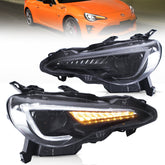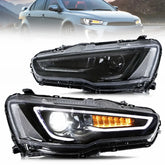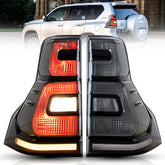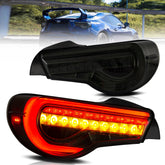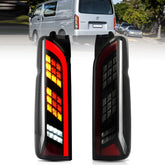How to Deal with Fogging or Water in Headlights: Expert Advice for Australian Drivers
Foggy headlights and moisture inside your light housing can be annoying—and potentially dangerous—especially with the varied Australian climate. Whether you’re driving through Sydney’s coastal humidity, Melbourne’s unpredictable weather, or Brisbane’s subtropical rain, condensation in headlights is a common issue for many vehicle owners. This guide breaks down the causes, symptoms, and effective solutions for fogging and water inside car headlights.

Common Causes of Headlight Fogging
Condensation typically occurs when the humid air inside the headlight meets a cold lens, causing fog to form on the inner surface. This is especially common in:
- High-humidity regions like coastal Queensland
- Sudden drops in temperature (common in southern Australia)
- Regular car washing or driving in rain
While condensation looks concerning, it’s usually not a fault and will often resolve naturally.
Why It Happens:
- Temperature difference: Warm, humid air inside the headlight condenses against the cooler lens.
- Moisture in the housing: Small air leaks or natural air exchange can let in moisture-laden air.
What Causes Water in Headlights?
Water pooling inside headlights, however, is a more serious issue. Unlike fog, standing water indicates:
- A broken or cracked headlight housing
- Failed sealant or rubber gaskets
- Improper headlight installation or an unsealed vent
Over time, this can short-circuit your lighting system, lead to corrosion, or even cause headlight bulb failure.

Fog vs. Water: How to Tell the Difference
A quick way to distinguish between headlight fogging and water ingress is to:
- Look for condensation across the lower part of the lens only = fogging
- Noticeable water streaks or droplets inside the housing = leak/water damage
If water lines or residual marks remain even after drying, you’re likely dealing with a headlight leak.
How to Fix Foggy Headlights
For mild condensation, here are practical solutions:
- Turn on your low beams for 15–30 minutes to heat and evaporate internal moisture.
- Park in a sunny, dry spot when possible.
- Remove the rear dust cap for a few hours to ventilate (be sure to seal it again after).
- For recurring issues, place silica gel packs inside the housing to absorb moisture.
Tip: This is a common fix for foggy LED headlights and fog light condensation in Australia.

How to Fix Water in Headlights
If there’s actual water inside, take immediate action:
- Remove the headlight and drain it completely.
- Inspect seals, vents, and lens for cracks or compromised seals.
- Use automotive-grade silicone sealant to repair minor gaps.
- Consider professional re-sealing or full replacement if the unit is badly damaged.
Important: If your vehicle is under warranty or the lights are newly installed aftermarket headlights, check with the manufacturer or supplier for potential support.

Can This Be Prevented?
Yes! Here’s how to reduce the chance of headlight condensation or flooding:
- Avoid high-pressure car washes directly on headlights.
- Ensure vents are clear and dust caps are properly sealed.
- Choose high-quality aftermarket headlights with proven water resistance.
- Install ventilation sponge pads on the air vent holes.
Bonus Tips for Australian Drivers
- In humid cities like Brisbane or Cairns, consider routine inspection during rainy seasons.
- For off-road enthusiasts or tradies, install aftermarket headlights rated IP67 or higher.
- If you're switching from LHD to RHD headlights, make sure the model fits local standards and comes with warranty and UV protection.
Friendly FAQs
Q: Why do my headlights fog up after rain?
A: Sudden humidity and temperature changes allow moist air inside the housing to condense on the lens. This is common in coastal and humid regions of Australia.
Q: How do I fix condensation in LED headlights?
A: Open the dust cap, turn on the lights, and dry the unit out naturally. For persistent cases, try silica gel or consult a professional.
Q: Can foggy headlights fail a roadworthy inspection in Australia?
A: If visibility is significantly impaired or there's standing water, yes—especially in states like Victoria and NSW where headlight clarity is strictly monitored.
Detailed operation process—>How to Fix a Headlight with Water or Moisture.
Final Thoughts
Dealing with fogging or water in car headlights doesn’t always require costly repairs. For Aussie drivers, awareness of the symptoms and proactive care can extend the life of your headlights—and keep your vehicle road-safe.
If you're using aftermarket headlight assemblies, choose trusted suppliers who offer warranty-backed, water-sealed lights made for Australian conditions.
Want to upgrade your headlights? Browse high-performance, water-resistant headlight assemblies at au.vlandshop.com, your trusted source for aftermarket lighting in Australia.

